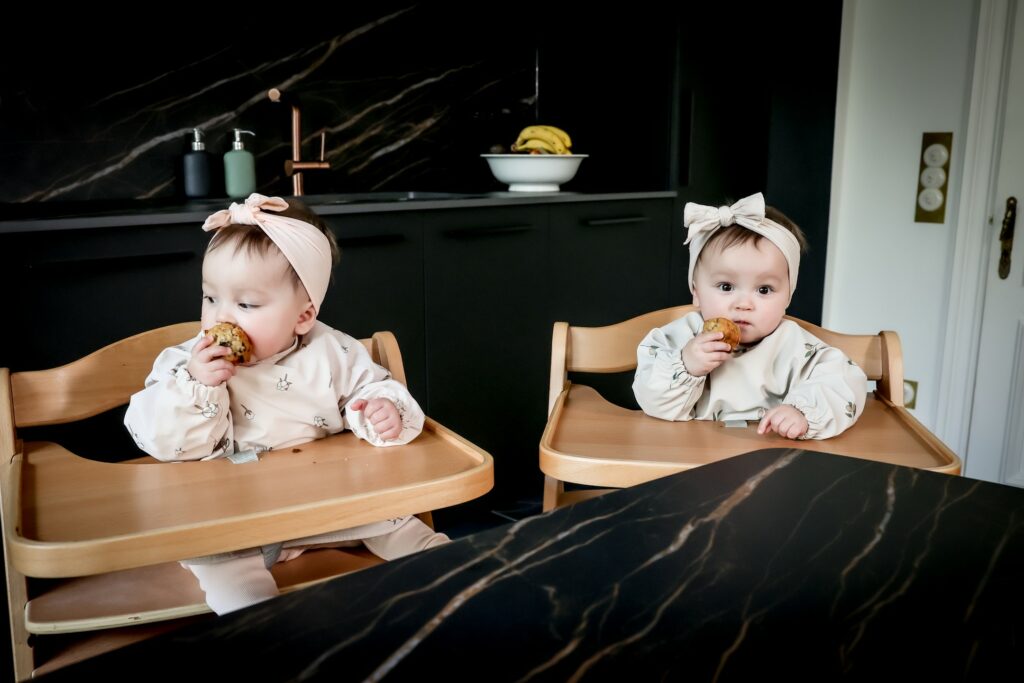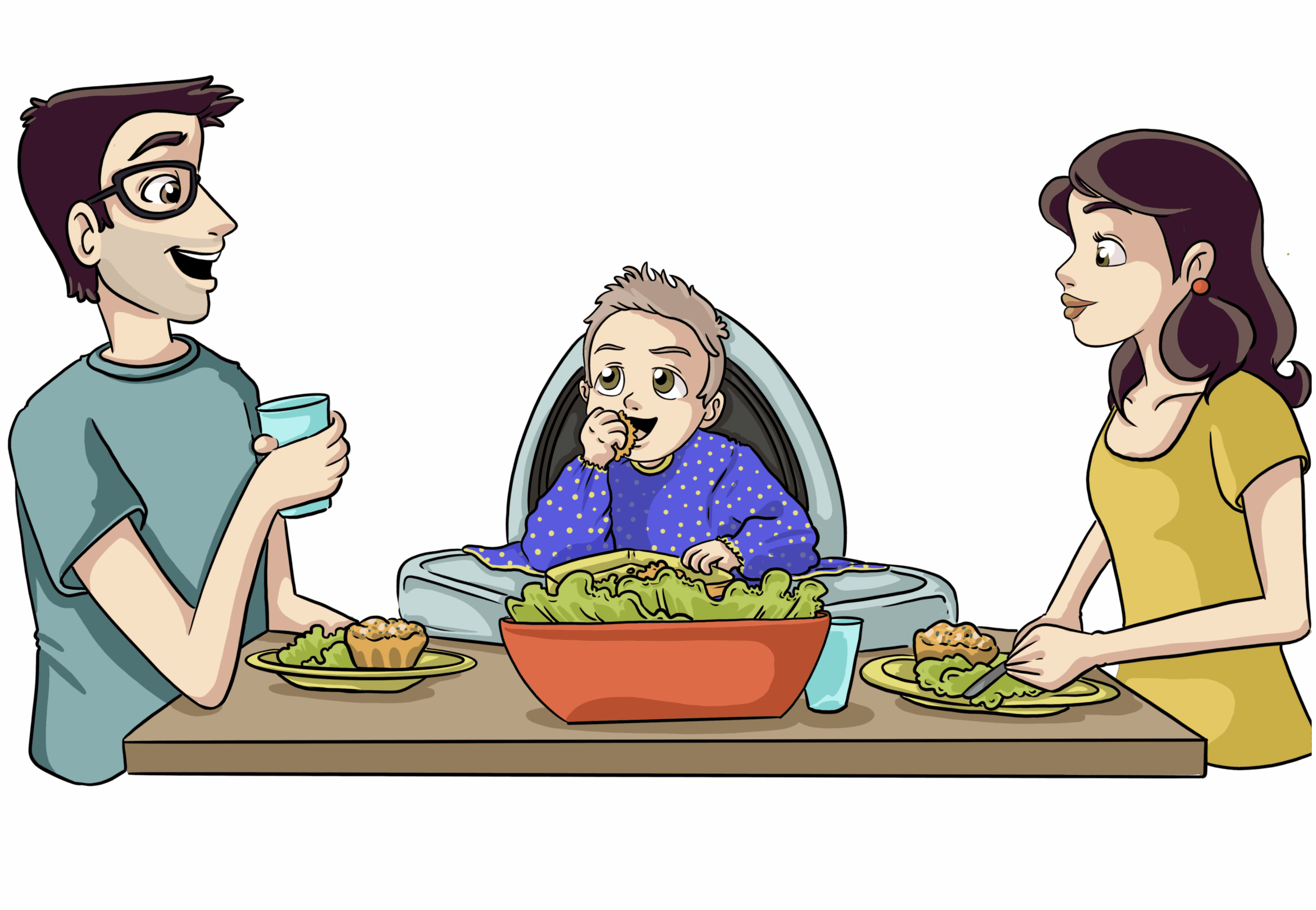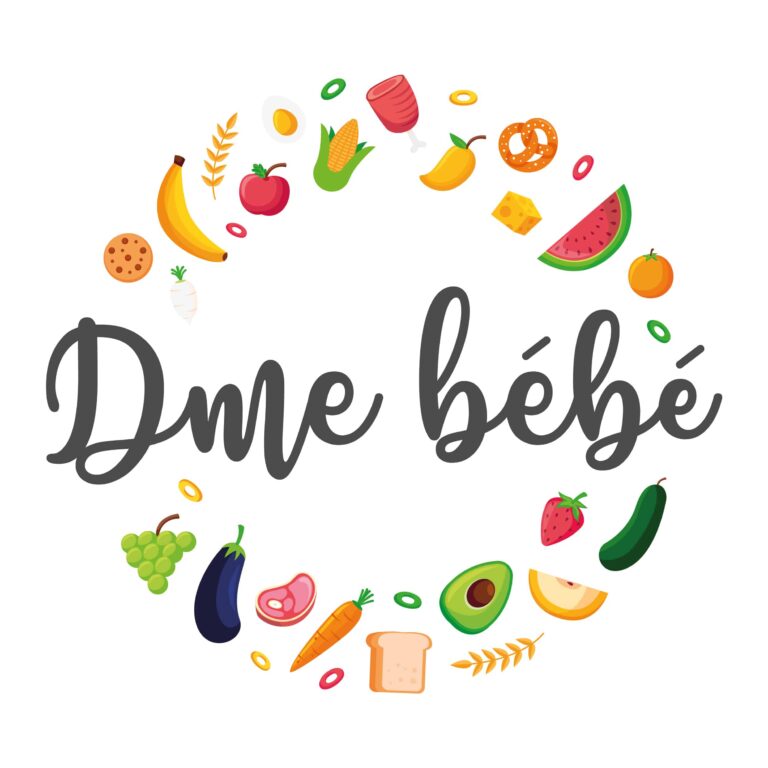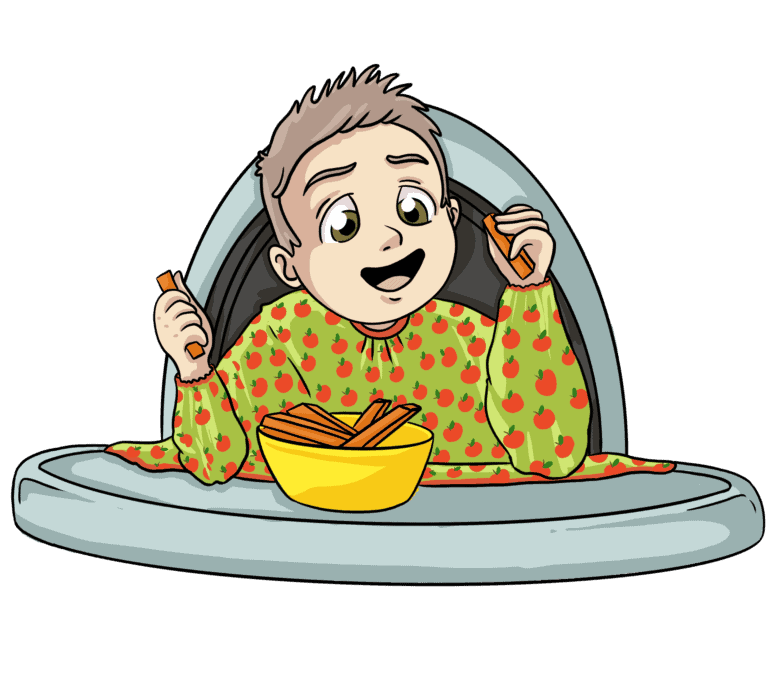The diversification led by the child is a different approach to classic diversification: we come out of traditional purees and small pots given to the spoon, to allow baby to discover foods independently .
In classic diversification, the transition from Milky Diet to Solid Food will generally be carried out with smooth or compote smooth textures. In BLW , food will be directly presented in the form of pieces . Of course, these will be offered in a safe format and suitable for baby .
But beware, we too often read definitions that reduce the BLW to the texture of the food offered: BLW is not just giving pieces to baby. ! It's much larger than that. BLW is a real food philosophy BLW Whether it is melting foods, pieces or spoons pre -filled with purees or compotes: it is a baby who carries each food alone to his mouth and who is an actor of his meal . Our role? Offer baby healthy foods suitable for its evolution.

Photo: © Moon and the other
Why embark on BLW ?
The reluctance that one can encounter in those around him is explained by the fact that this approach is still strongly overlooked in France and Belgium. However, in Canada, it is already well developed. We can also draw several advantages :
- Discovery of food with each sense
- The development of its motor skills
- Be able to share a family meal
- Discover the true nature of food
- Satiety management
- Less risk of neophobia
1. Discovery of food with each sense
The BLW will allow baby to discover foods with each of his senses . He can explore the texture, the smell, the shape, the color and the taste of each food. A real adventure with each meal.

2. Development of its motor skills

Baby is an actor in his meal and will enjoy discovering each food. By grabbing these with his hands, he can develop his fine motor skills and you will be surprised to see how fast he can catch more and smaller pieces.
3. Share a family meal
Everyone eats at the same time and you can fully enjoy sharing a family meal . You will play an example role for your baby and this one will try to imitate you. This will create a ritual around the family meal and develop food routine from the start . In addition, as a baby can eat (almost) the same thing as you, it's a hell of a time saving in the kitchen!

4. Discovery of the true nature of food
It is up to her three years that the whole baby's food palette built . It is therefore very important to offer him a wide variety of fruits, vegetables, meats, cereals, ... so that he can expand his food palette as much as possible.
BLW BLW a diet where processed or industrial will be limited to the maximum . He can thus discover the true nature of food .
5.
The risk of developing an adult overweight will be reduced thanks to early learning of satiety!
BLW also allows baby to BLW their needs . He learns to manage his satiety alone and understand his different signals: an essential ability for his future food. We, parents, have (often) tend to play a harmful role on his appetite: pressure to finish his plate, the erroneous vision of the “adequate” portions to eat, social standards, fear that baby does not eat enough, or eat too much,….
By letting him eat alone we offer him the possibility of consuming the quantities he wants and which he really needs. He will eat his hunger at the table , and can then ask for the breast or the bottle to meet his needs.
6. Less risk of neophobia
Neophobia is the reluctance to taste a new food . This is also manifested by a certain selectivity in terms of the choice of food. And by a refusal to eat foods already accepted previously.
It is therefore recommended, to offer baby a maximum of food in pieces . BLW BLW a perfect answer to avoid developing future food neophobia.


2 responses